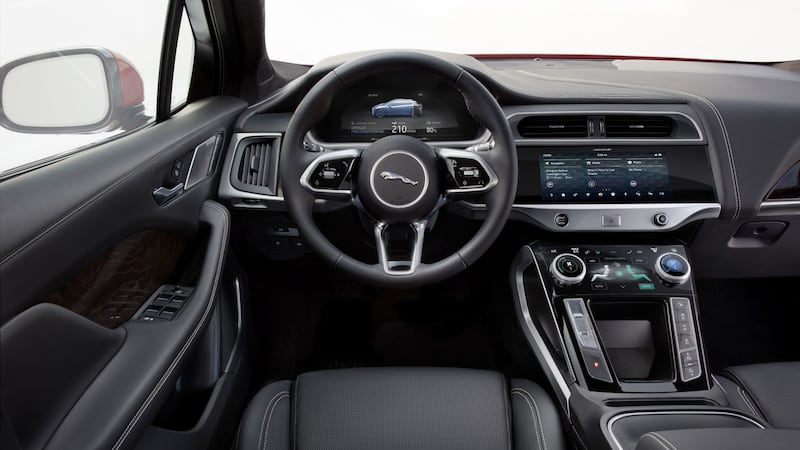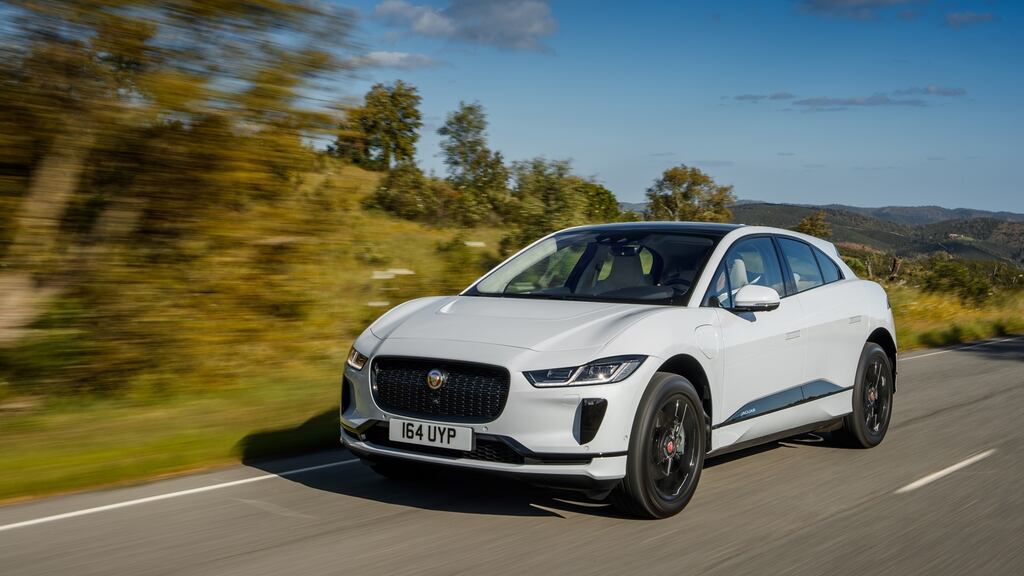It has been a long time coming, this electric car future, but finally the established manufacturers are plugging in to the battery-power zeitgeist. US technology upstart Tesla caught them all napping, and, in turn, demonstrated not just the potential for full electric vehicles, but that there’s real demand for them.
Only now is the old guard really catching up, in the premium sphere at least. There is some plug-in potential in the mainstream, courtesy of Nissan's Leaf, the electric VW Golf, Hyundai's Ioniq and the Renault Zoe but, oddly, in the premium marketplace the charge to change is only just beginning. Given it's arguably the one most suited to early adoption of such technology, manufacturers have been uncharacteristically slow to exploit it, with the notable exception of BMW's quirky i3.
Surprisingly, it is Jaguar which has shown its hand first in the volume premium plug-in battery marketplace, its I-Pace in showrooms now while we're still waiting from Audi to respond with its e-tron and Mercedes-Benz its EQ C. That's an impressive coup for Jaguar, particularly from a company which until recently couldn't even offer an SUV contender in its line-up.

The I-Pace is, like its eventual competition, SUV-sized, a happy coincidence that the current darling among customers is particularly suited to electrification. The higher platform allows space for its 90kW battery pack underneath the passenger compartment, meaning there are few packaging constraints or compromises.
Visually, Jaguar's head of design, Ian Callum, has done a fine job of creating something that's refreshingly different, but not so outlandish to alienate, either. After all, if the future is going to be embraced by the masses, it needs to be acceptable. That is true of how it drives and, more importantly than that, how easy it is to live with.
Potential range
That traditional stumbling block for electric cars is the potential range; Jaguar is quoting a 480km on the WLTP testing cycle. The reality, even under this more representative testing procedure, will be less. If the I-Pace can manage two-thirds of that in real-world driving then it’ll be doing well indeed.
As a driver of an i3 I’m only too aware of range-anxiety, many a journey stymied by the BMW’s circa – in good conditions – 200km range. It’s just not enough outside the city. Getting into the I-Pace, the instrumentation indicates the range at 375km with 100 per cent charge. Not quite what’s promised then, and it’s hot. Heat (or cold) is the electric car’s biggest enemy, with air conditioning or heating playing havoc with the battery’s potential range.
It’s 30 degrees today, so the A/C is a necessity, not a luxury, it quick to chill the I-Pace’s smart interior. It’s all familiar in there, the Touch Pro Duo infotainment is lifted entirely from the JLR line-up. A pair of touchscreens dominate, then, these taking a bit of learning, the build quality being fitting of the Jaguar’s price tag and premium positioning, making a Tesla – big screen aside – look like a kit car.
Functionality
There’s some electric car-specific functionality within that digital infotainment and instrumentation; the sat nav highlighting charging points and potential range. There’s the ability to connect to your I-Pace via a smartphone Jaguar incontrol remote app for charging and pre-conditioning the cabin for your departure.
If you desire, you can chat to it via Alexa, though does anyone actually do that? Regardless, it’s all fairly conventional stuff these days, as will be the ability for Jaguar to make updates to the I-Pace’s software over the air. And we mustn’t forget the wifi connectivity for eight devices – it seats just five people, mind.
If the 400km range potential seems to be the magic figure in this burgeoning marketplace, so too is the I-Pace’s 400bhp output, four-wheel drive and pair of electric motors. The Mercedes-Benz EQ C and Audi e-tron will offer similar; Jaguar claiming that the I-Pace will reach 100km/h in just 4.8 seconds should you need it to.
That’s rapid indeed. If you wanted to match that in a conventionally powered Jaguar, you’d need a 5.0-litre Supercharged V8 petrol F-Pace. The performance is aided by the electric motors’ ability to produce everything immediately, electric motors’ make-up allowing such brisk step-off performance. The cynical might suggest that such performance is also a consequence of its price, with the outlay required for an I-Pace placing it among high-power, top-specification models with conventional engines.
Brave new world?
A brave new world for early adopters then, or simply a different take on driving? The latter, electric mobility not so different in reality, the smoothness, quietness and effortlessness of the drive fitting perfectly with the luxury associated with premium cars. The I-Pace is quiet and composed, the ride comfortable, the steering accurate and the braking feeling entirely natural – something that’s not always true of electric cars. It’s quick, too, devilishly so if you mess around with the drive modes for Sport, change the digital dial ahead of you to red and floor it.
That’s not really the point, fun as it is, do it and the range will tumble as fast as the speedometer needle sweeps around its digital face, quickly tempering your enthusiasm to feel the elastic speed gain and always-ready drive train. Assuming it’s charged that is, as however good it is on the move, it’s parking it and filling up the battery that, for many, will be the deal-breaker.
Charging
On a 7kW AC wallbox at home you’ll need about 10 hours for an 80 per cent charge, though if you can find a 100kW DC rapid charger, you’ll get the same 80 per cent in 40 minutes, or about 100km worth of range in 15 minutes. Manageable, then, but there’s no denying that the rapid charging infrastructure needs to catch up with the cars that are being produced to use it.
When that happens, there’s no denying the switch should be pretty seamless; charging availability and time being the only real compromise, as in every other way the I-Pace’s conventionality is its appeal, with the benefits of near silent operation, serene comfort and neat styling. The future is looking very good indeed, all of which makes us wonder why it’s taken so long to arrive.
Lowdown: Jaguar I-Pace
Power: Two electrical motors, combined output 400hp and 696Nm of torque, automatic transmission and four-wheel drive.
0-100km/h: 4.8 seconds
Emissions (motor tax): 0 (€120)
Pricing: From €84,085 after €7,500 in Government grants
Our rating: 3/5
Verdict: The future's finally here, and it's impressive; now the infrastructure needs to catch up.











